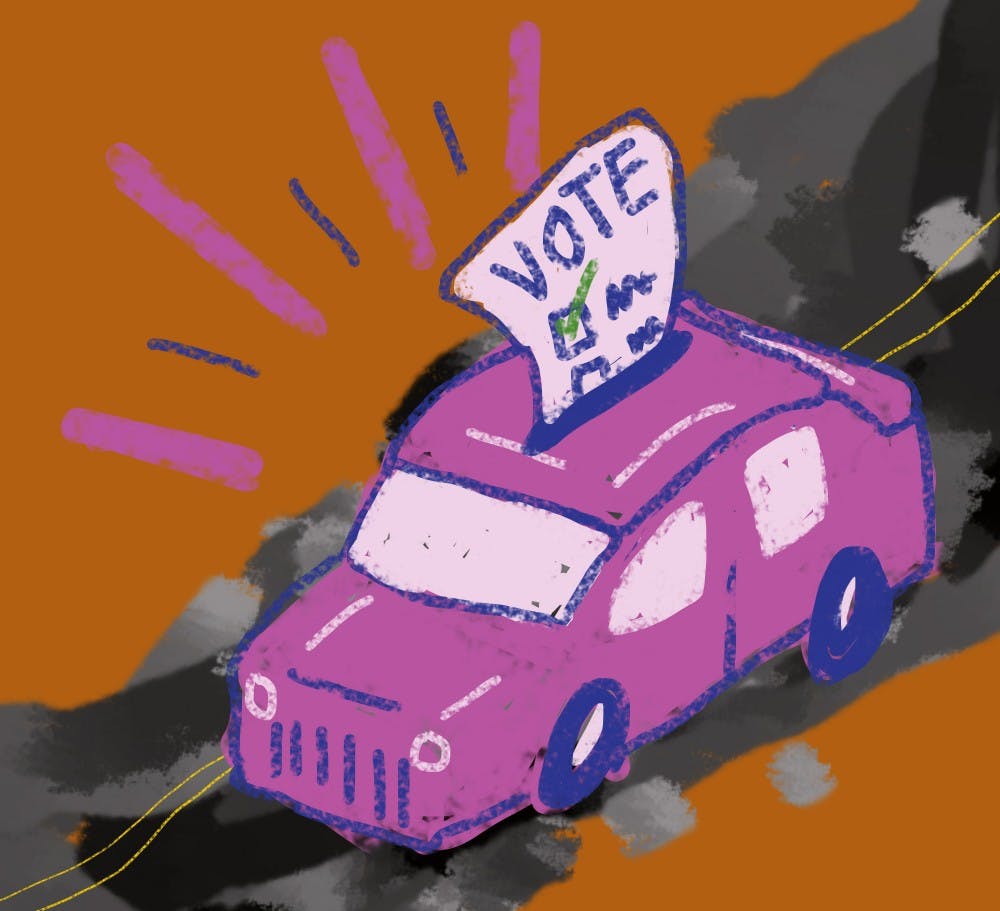Lyft will be offering free and discounted rides on Election Day this year. The temporary price drop is part of an initiative to increase voter turnout. Through this, Lyft has set an excellent example for other private companies and cities with public transit to do the same on Election Day.
Lyft will be offering 50 percent off rides with the help of nonprofit organizations that work to increase voter turnout, including Vote.org, Nonprofit Vote and TurboVote. Free rides will be offered in “underserved” urban areas with the assistance of Voto Latino, the National Federation of the Blind and local affiliates of the National Urban League.
A study from Pew Research Center showed that in 2014 nearly half of nonvoters (46 percent) have family incomes of less than $30,000. Similarly, the 43 percent of people who are not likely to vote are Hispanic, African American or other racial and ethnic minorities.
While Lyft’s efforts are admirable, the fact that private companies have stepped up to transport people to their polling locations reflects poorly not only on U.S. infrastructure, but the value placed on these less-accessible voters.
In 2016, transportation issues prevented an estimated 15 million registered voters from getting to the polls. It is evident something must be done to remedy the situation. Lyft’s plan for Election Day is a promising step in the right direction, but Lyft should not be stepping up before public transportation.
Every vote counts regardless, but 15 million is an alarmingly large number of voters to be going unheard simply because of transportation. To put it into perspective, that’s roughly the equivalent of 15 Indianapolis-metropolitan areas.
Given, Lyft can secure funding from nonprofits to pay its drivers for the day, and the government cannot. But the loss of one day’s earnings from public transit is a small price to pay for an increase of 15 million in voter turnout. There’s arguably no better use for taxpayer money than ensuring nothing stands between citizens and civic engagement.
When the government falls back on Lyft to transport people that otherwise could not get to their polling locations, it fails these people. The right to vote refers to a cast vote, not a vote that goes unused because of circumstances beyond a citizen’s immediate control. This form of disenfranchisement quiets low-income voters. While Lyft’s efforts may help, there are still voters without transportation or smartphones that will go unheard in November. Not everyone has access to the technology to take advantage of Lyft’s offer.
Setbacks like these are enough to stop some people who are eligible to vote from even registering, which is why Lyft is attacking on all fronts by also making voter registration available at Hub locations and to employees in office.
It’s possible that the entire concept is nothing more than a marketing strategy to Lyft. They’ll receive good publicity, while the nonprofits act as the backbone of the plan. It may be an exploitation of civic duty for future capital gain, but this is by no means the first time Election Day has been manipulated in this way. The differences is that this time, something positive is coming of it. Across America, more disenfranchised voters will be heard this year.
Lyft is doing all that it can to get people to the polls Nov. 6. While this effort is exciting and may increase voter turnout, it also highlights the inaccessibility of the polls. The lack of action taken by the public sector to provide transportation is disappointing. If public transportation took action in the same way, the effects would reach much further.
As Election Day approaches, if you plan to use these modes of transportation, it is necessary that you register to vote and that plans be made in advance. The simplest way to be heard is to vote.




